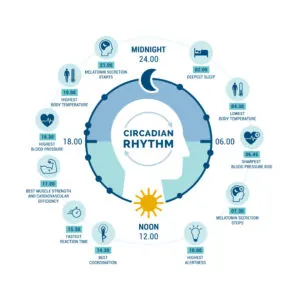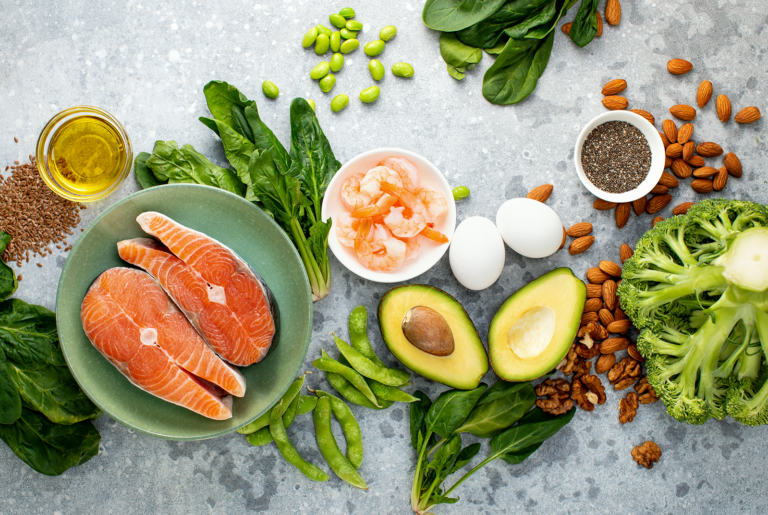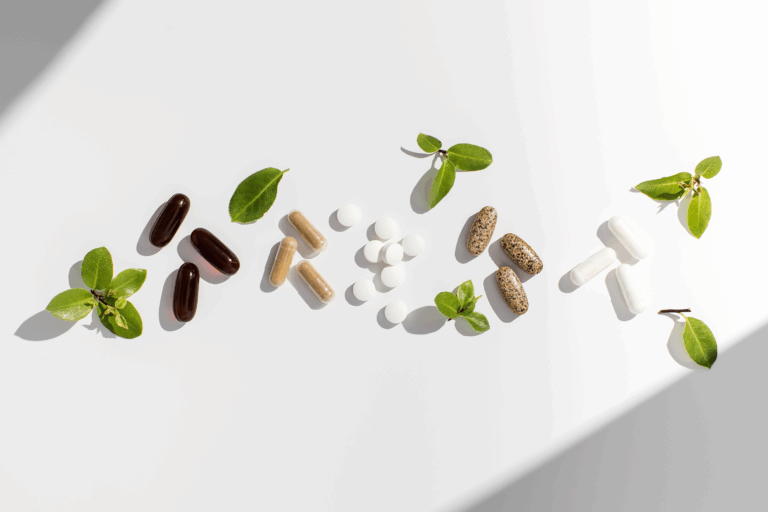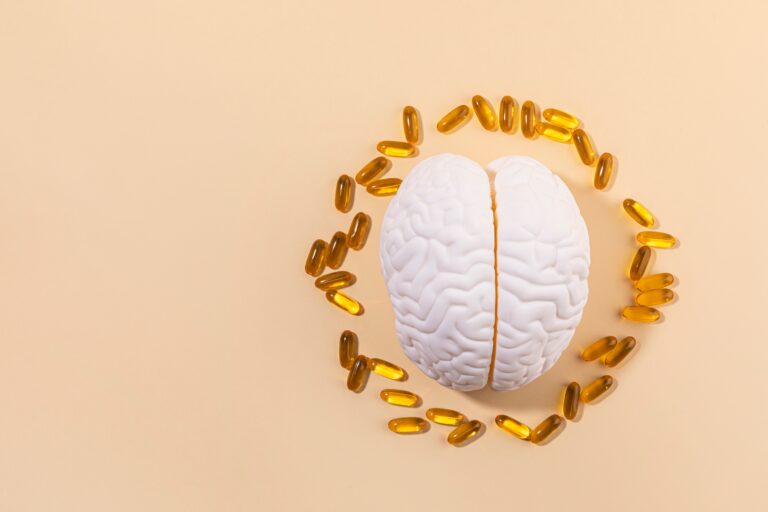Circadian Rhythm: Timekeeper of the Body
What Is Circadian Rhythm?
Circadian rhythm is an internal system in the body, sensing night versus day and allowing different systems to know when to sleep and when to be awake. If left to its own devices, the human body will operate naturally on a cycle that is close to 24 hours – its circadian rhythm. The term “circadian” comes from the Latin words “circa” (around) and “diem” (one day).1 There is a central, master clock that regulates circadian rhythm, but cells and tissues also express local clocks that coordinate and regulate each other.1 The circadian rhythms of the body regulate many processes including behavioral and biochemical processes throughout the day-night cycle.1 In return, the circadian rhythm is regulated by internal and external factors:1-3
| Internal | External |
|
|
Circadian rhythms dictate that wakefulness, energy intake, nutrient processing, and activity occur during biological daytime while sleep, fasting, inactivity and restorative processes occur during biological night-time.3 The major functions of the circadian rhythm involve regulating the sleep-wake cycle, blood pressure, body temperature, hormonal homeostasis, digestive function, metabolism, cognitive function, healthy brain development, and immune function.4 Additionally, physiological processes in the body follow their own circadian rhythm, varying across the 24-hour day. This includes reactions that occur at the cellular, transcriptomic (RNA and DNA), proteomic (proteins), metabolomic (metabolites), tissue, and organ levels.3 Examples of physiological reactions that follow a circadian rhythm include:1
- Glucose tolerance: peaks during daylight, when most humans consume the bulk of their calories
- Melatonin: drops in the morning to help with waking up and rises in the evening to induce sleepiness
- Body temperature: rises in the early morning hours after dropping during sleep.
Mechanisms
The body’s circadian system consists of multiple interconnected clocks; the dominant circadian pacemaker is found in the suprachiasmatic nucleus (SCN) of the hypothalamus and coordinates with circadian clocks in peripheral organs and tissues to integrate the entire system.1 The SCN is synchronized to the earth’s 24-hour light-dark cycle. It receives light signals sensed by the eye and sends that message to peripheral, downstream targets to sync-up all of the clocks of the body.5 In fact, light is the primary zeitgeber, or time cue, for the body’s central clock.5 Food intake, including composition and timing, is also an important zeitgeber for the body’s biological clock as consuming food at inappropriate times can desynchronize the circadian rhythm and negatively affect health.5,6
At the molecular level, circadian rhythm works via transcriptional regulation in an autoregulatory feedback loop. In this mechanism, proteins are modified to either increase production or degradation which then signals the cells, tissues, and body systems to carry out specific functions.1
The main proteins involved in circadian rhythm are BMAL1, CLOCK, PER, and CRY. BMAL1 and CLOCK positively regulate the expression of their target proteins, PER and CRY, beginning the cycle. Over the course of a day, PER and CRY accumulate and form a complex that then travels to the nucleus of the cell where they suppress the activity of BMAL1 and CLOCK. As the PER/CRY complex is degraded, the BMAL1/CLOCK complex can be reactivated to begin the cycle again.6
This molecular machinery is present in every nucleus-containing cell, helping to integrate circadian rhythms throughout the body, at every level.4,6 The feedback cycle is genetically programed to take about 24 hours and is synchronized to the environment, mostly via light although the CLOCK/BMAL1 complex is directly affected by sleep, diet, and exercise.1,4
There are modifiers, regulators, and downstream targets of these four critical proteins that fine-tune this complex system. Downstream targets are called clock-controlled genes and regulate important processes including metabolism of glucose and lipids, adaptive thermogenesis, adipogenesis, and bile acid synthesis.1,2
Types Of Rhythms
Whole-body circadian rhythm typically follows a 24-hour pattern, but there is individual variation due to factors like lifestyle and environment.4 An individual’s personal rhythm is referred to as their chronotype.1 The three general chronotypes are morning, evening, or intermediate, based on the individuals preferred time for most activities.1 An individual’s chronotype affects habits and behaviors as well as food intake and nutrient intake.1,5
A systematic analysis revealed that evening types tend to consume more energy-dense foods, especially late at night, and overall fewer healthy foods.5 They were also likely to eat later in the day, consume bigger portion sizes, and watch television while eating, ultimately resulting in an increased incidence of overweight and obesity among individuals with an evening chronotype.5
Circadian rhythm is one of four biological rhythms that occur in the body. These biological rhythms differ in duration and occurrence. Diurnal rhythms are circadian rhythms that have synced to the day-night cycle and include body temperature and heart rate.7
Infradian rhythms last longer than a 24-hour period but still occur regularly.7 An example of an infradian rhythm is the female menstrual cycle operating on a monthly rhythm. Other infradian rhythms may operate every week or even annually.
Ultradian rhythms have a cycle shorter than 24 hours or occur more than once per 24 hours.7 An example of a biological process that follows an ultradian rhythm is sleep stages, including deep, light, and REM sleep.7
Evolutionary Adaptation Versus Modern Life
Exposure to light is the biggest dictator of circadian rhythm, and the relationship between humans and light has changed drastically over time with technological advancements. Historically, humans had to center their lifestyle around sleep and daylight. Without access to artificial light, gathering or hunting was restricted to sunlight and avoiding hot temperatures dictated sleep patterns and behaviors such as napping in the mid-day.3
Modern lifestyle, in contrast, is full of disruptions to sleep which contribute to circadian misalignment.1,3 Currently about one third of adults sleep less than the recommended seven hours per night. Society operates 24/7, meaning several occupations require night shift work. As sleep patterns have changed so have sleep disruptors, including quantity and complexity.3
Access to electric light is also common now, virtually ubiquitous in developed countries, which can change sleep schedules.3 As the human population experiences increasingly greater circadian misalignment, people may turn to substances to reduce sleepiness, including energy drinks and caffeine, or induce sleepiness, such as synthetic melatonin or diphenhydramine, which can further exacerbate circadian misalignment.
| Modern Sleep Disruptors |
| Television |
| Game consoles |
| Tablets, smart phones, and smart watches |
| Caffeine and alcohol |
| Mental health issues |
Circadian Rhythm Regulates Sleep, Stress, and Mood
Sleep
Circadian rhythm is synchronized according to light the body receives, making sleep one of the most important regulators of circadian rhythm.2 In the other direction, several components that signal the body to sleep are regulated by circadian genes, including melatonin.8
Many of the functions regulated by sleep overlap with those that are regulated by or express their own circadian rhythm.3 In fact, sleep is closely connected to circadian rhythm and they regulate each other, resulting in a cycle of improved sleep and circadian rhythm or a vicious cycle of disturbances and issues.2 Disrupted sleep can alter the body’s natural circadian rhythm; likewise, when the circadian rhythm is misaligned, it can disrupt sleep.2
Stress
Regulators of stress and the circadian system are both located in the hypothalamus. The HPA (hypothalamic-pituitary-adrenal) axis coordinates the body’s response to stress.
The hypothalamus also houses the SCN, which contains the central circadian pacemaker. Elements of the HPA axis including hormones and glucocorticoids such as ACTH and cortisol follow their own circadian rhythm; the HPA axis receives direct input from the SCN via the paraventricular nuclei in the hypothalamus.6,9 Glucocorticoids secreted in response to stress can also train peripheral clocks and increase expression of PER clock genes.2
Elevated or chronic stress can change cortisol secretion with negative effects throughout the body, including altering its circadian rhythm.9 Conversely, circadian misalignment can cause desynchronization of the HPA axis, disrupting the production of important neurotransmitters and hormones that make up elements of the HPA axis.9
Mood
Stress and sleep are both critical mediators of emotional regulation, mood, and resilience to stress.9 When either element is disturbed, circadian rhythm can become misaligned, disrupting HPA axis signaling and leading to persistent stimulation due to external stressors. This chronically activated stress response can disturb moods and emotional balance and ultimately contribute to mental health issues.9
Circadian Rhythm Homeostasis
Circadian rhythm alignment is critical to maintaining homeostasis in the body. It keeps many physiological processes running smoothly and in coordination. Any exposure, event, or condition that affects any element of circadian rhythm regulation can affect downstream pathways and changes in downstream pathways may have an effect on circadian rhythm. Even seemingly unrelated components of the body can affect circadian rhythm. For example, the gut microbiome displays its own rhythm and can also affect the central circadian rhythm.
Events that disrupt gut microbiome composition can influence circadian rhythm and consumption of foods, such as plant-derived fiber and polyphenols, that support gut health can help resynchronize circadian clocks.1
Circadian Rhythm Disorders
There is strong evidence that disruptions to circadian rhythms can seriously impact health including contributing to the development and progression of obesity, type 2 diabetes, cardiovascular disease, hypertension, and dyslipidemia.1,3 Evaluating the habits and health of night shift workers allows researchers to better understand how modern lifestyle, specifically altered sleep, affects circadian rhythm.
Common issues related to circadian misalignment in shift workers include:3,9
- trouble sleeping,
- excessive sleepiness
- fatigue
- decreased energy expenditure which may contribute to weight gain
- hormonal imbalance
- inflammation
- impaired glucose metabolism
- metabolic syndrome
- gastrointestinal dysfunction
- compromised immune function
- mood and social disorders
- poor physical health and mental health leading to reduced quality of life
- increased cancer risk
In addition to shift work, there are other types of circadian rhythm disorders based on the pattern of sleep and wakefulness.10
| Advanced sleep-wake phase disorder | difficulty staying awake in the early evening and consequently waking up too early in the morning |
| Delayed sleep-wake phase disorder | Falling asleep later than desired and having difficulty waking up on time in the morning |
| Irregular sleep-wake rhythm disorder | several short periods of sleep and wakefulness consisting of being unable to sleep during the night and taking multiple naps during the day due to excessive sleepiness; may result in not feeling rested after sleep |
| Jet lag disorder | a temporary disorder that may affect travelers who cross over at least two time zones in a short period |
| Non-24-hour sleep-wake rhythm disorder | the body’s sleep-wake rhythm is not in sync with the 24-hour day resulting in sleep times become gradually more delayed |
Ways to Support Healthy Circadian Rhythms
The two most significant regulators of circadian rhythm are light and food. As such, observing healthy sleep habits and dietary patterns can support alignment of the body’s circadian rhythm. Mimicking the patterns of ancestors who did not have access to electric light can significantly help circadian alignment and enhance metabolic health.3
For example, seeking out exposure to bright daylight and making evening lighting dim can help the body get in sync with the natural rhythms of the day, similar to the natural human experience throughout time. Additionally, consuming a diet that is full of nutrient-dense, colorful fruits and vegetables is associated with improved sleep quality and healthy circadian rhythm.3
Additionally, avoiding food at night can help keep the circadian rhythm on track and improve metabolic health which can in turn increase sleep parameters.3
- Franzago, M., Alessandrelli, E., Notarangelo, S., Stuppia, L., Vitacolonna, E. (2023). Chrono-Nutrition: Circadian Rhythm and Personalized Nutrition. Int J Mol Sci, 24:2571.
- Huang, W., Ramsey, K.M., Marcheva, B., Bass, J. (2011). Circadian rhythms, sleep, and metabolism. J Clin Invest, 121(6):2133.
- Chaput, J.-P., McHill, A.W., Cox, R.C., Broussard, J.L., Dutil, C., da Costa, B.G.G., Sampsa-Kanyinga, H., Wright, K.P. (2023). The role of insufficient sleep and circadian misalignment in obesity. Nat Rev Endocrinol, 19(2):82.
- Juliana, N., Azmi, L., Effendy, N.M., Teng, N.I.M.F., Abu, I.F., Bakar, N.N.A., Azmani, S., Yazit, N.A.A., Kadiman, S., Das, S. (2023). Effect of Circadian Rhythm Disturbance on the Human Musculoskeletal System and the Importance of Nutritional Strategies. Nutrients, 15:734.
- van der Merwe, C., Münch, M., Kruger, R. (2022). Chronotype Differences in Body Composition, Dietary Intake and Eating Behavior Outcomes: A Scoping Systematic Review. Adv Nutr, 13(6):2357.
- Koch, C.E., Leinweber, B., Drengberg, B.C., Blaum, C., Oster, H. (2017). Interaction between circadian rhythms and stress. Neurobiol Stress, 6:57.
- Vitaterna, M.H., Takahashi, J.S., Turek, F.W. (2001). Overview of Circadian Rhythms. Alcohol Res Health, 25(2):85.
- Yoo, Y.-M., Joo, S.S. (2023). Melatonin Can Modulate Neurodegenerative Diseases by Regulating Endoplasmic Reticulum Stress. Int J Mol Sci, 24:2381.
- James, S.M., Honn, K.A., Gaddameedhi, S., Van Dongen, H.P.A. (2017). Shift Work: Disrupted Circadian Rhythms and Sleep- Implications for Health and Well-Being. Curr Sleep Med Rep, 3(2):104.
- NIH National Heart, Lung, and Blood Institute. (2022). Circadian Rhythm Disorders. Available at: https://www.nhlbi.nih.gov/health/circadian-rhythm-disorders/types.S








